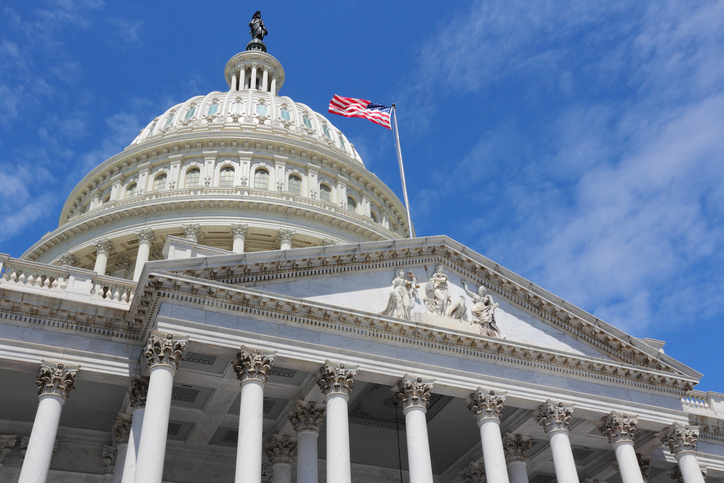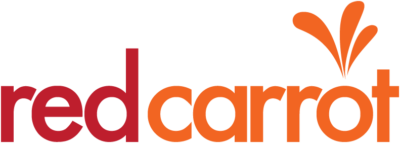
Overview
Regardless of your views on the size of the federal government, Red Carrot believes we can all agree that we want it to be more effective. This white paper focuses on improving government efficiency and effectiveness for federal agencies. It addresses the rulemaking process that most agencies follow to enact legislation, and issues impacting effectiveness and efficiency.
Red Carrot has experience that encompasses developing new products and services, managing new business launches, and implementing government programs. Our focus is on crisp execution and program effectiveness. This experience spans private industry, local, state, and federal government. We have used this experience to understand and reengineer the rulemaking efforts in the Federal Government.
Red Carrot Effectiveness Guidelines
Whenever we take on a new project, we follow these guidelines on effectiveness and efficiency. These guidelines are useful for any program and organization and inform our analysis and recommendations. They include
- Identify what “business” you are in and organize around that business
- Understand the objectives of any program
- Ensure that single leadership will follow through the entire project
- Establish clear lines of authority and responsibility
- The program lead should drive the project with support from technical groups (legal, IT, etc.) to meet the goals and
- Identify critical success factors to improve outcomes
- Move the responsibility down the organizational structure and limit the hierarchy and delay in decision making
- Have a field focus to ensure a smooth rollout and operation
Rule Management – Synopsis
Problem Statement
Rulemaking is the process that the Federal Government follows to implement rules and regulations. It is the engine that drives the agency’s ability to regulate and meet their mission. Agencies develop rules based upon laws passed by Congress. These rules sometimes arise from a specific law, but other times they develop from the agency based upon a generic authority given to them by Congress.
Some believe we have too many rules, others not enough, but Red Carrot believes we all want the rules that are promulgated to be understandable, to have the least negative impact on our economy, and to be effective at improving the public good.
While this paper will not focus on the political aspect of legislation and rulemaking, the genesis of rulemaking is important to understand so that the effectiveness improvements are clear.
Once Congress passes laws, agencies then promulgate various rules using an inefficient process. The legal department, in consultation with other departments, usually writes the rules. The rules then move through the agencies from the responsible program group to Information Technology (IT) and are implemented by the field with little follow-through or consistency. Often, the field is not brought into the process until the rule is final. (Figure 1)

This results in an inefficient rules process and can be at odds with the initial intent and with other rules. They can also be somewhat divorced from the lawmakers’ intent and the current administration’s goals and objectives.
Thus, we have an inconsistent web of rules that regulate our economy: rules that overlap, conflict with one another, are incompatible with other agencies’ rules, and at times illogical to the public. Effective rule management would improve execution, thus improving the public good while limiting negative impacts to the citizens and the economy.
Solution
Implementing a Rule Management Role (similar to Product Management in industry) within each agency is essential for improving government efficiency and effectiveness. Develop additional analytics and tools for the new role to better manage the process and to support decision making by the Secretary of the Agency.
I. Rule Management Role
The rule manager is responsible for and participates in each step of the process, from rulemaking, to agency approval, and eventual implementation. (Figure 2) This includes post-implementation assessment and improvements as needed.
The role will:

A. Maintain a Field Focus. This is critical for effective enforcement/compliance and smooth execution. The field is ultimately responsible for enforcement of the rules that are promulgated by the agencies. Few agencies emphasize this area enough. The field has hands-on experience with the issues that can arise around enforcement and must be included.
B. Work with all relevant organizations, to include but not limited to field organizations, IT, legal and potentially other agencies. This will help to ensure success that is based upon a shared understanding. This shared understanding is critical to effectiveness. All parties must agree upon how the rule will work internally, including the IT systems, support personnel, and how this relates to the citizens.
C. Look to internal government groups for information. This includes the agency’s research group, industry statistical information, and any work done by other agencies that impact on the proposed rule.
D. Incorporate public listening sessions and outreach with a focus on impacted industries/ The session’s results need to be incorporated into the rule development to show citizens that concerns were considered and to improve effectiveness while limiting unwanted negative impacts. These sessions should be tightly controlled with required registration and time limitations. Written feedback can be less restrictive.
E. The Agency must change the role of agency lawyers from driving the rule process to supporting it, ensuring that the rule language is in sync with the Concept of Operations and agency objectives. Lawyers take the role of advisor to the program leads.
II. Rule Management Tools
The following analytics and tools will support the objectives of improved control over the rules process while limiting negative economic impact. They will ensure a clear understanding of how the tools will work and interact with existing rules.
A. Determine Objectives of the rule
The agency should develop the high-level objectives of the rule or rule change. This objective is needed to inform the rules gap/conflict analysis and the Concept of Operations.
B. Develop a Gap Analysis
Identify all related rules/laws and develop a gap/conflict analysis corresponding to the new proposed rule. This should include other agencies’ related rules. This necessary analysis ensures a clear direction to all supporting organizations, enforcement, and those being regulated. This must go to the Agency Secretary as part of the approval package. Over time, this will help to eliminate old, outdated, redundant, and inconsistent rules.
C. Produce Program/Rule Concept of Operations
This analysis is developed across the organization with all parties involved. The Concept of Operations will detail the processes, needed systems, and people required to support the proposed rule.
- Build a shared understanding across the agency’s organizations. This will improve the understanding of all impacts of the rule to the agency and the public.
- Develop business processes across the agency to define how each group within the agency will support the rule and how it will be implemented.
- This shared understanding helps an agency’s legal team write a clear rule for publication that can be fully supported by the agency.
D. Follow-up Plan
Develop a detailed follow-up plan to test the effectiveness of the rule and determine any unintended consequences. This would incorporate feedback from all impacted departments, allowing the agency to modify and improve the rule. The goal is to test whether the rule meets the initial objectives and if the systems are working properly.
E. Agency Approval Package
Currently, the proposed rule and related information go to the Office of the Secretary for approval. Without a detailed Concept of Operations and gap analysis, it can be difficult for agency leadership to truly understand the rule and how it will work. These two additions to the package would provide the information needed for the Office of the Secretary to effectively evaluate the proposed rule and ask more detailed questions.
Benefits that lead to improving government efficiency and effectiveness
Making these changes will ensure that the rulemaking process is more efficient and effective. This improved efficiency will help reduce the cost of rulemaking and thus help with the agency budgets. By optimizing the rulemaking process, agencies ensure that clear and concise defined rules meet the objectives of Congress while maintaining strong input from the administration. These changes also benefit the economy by reducing inconsistent, redundant, and useless regulations, ultimately improving government efficiency and effectiveness.
If your agency or business can use help in addressing process issues, lack of meeting goals and objectives, or other inefficiencies, contact Red Carrot and we can discuss how we can help.
About Red Carrot
Red Carrot, an 8(a) and woman-owned business, distinguishes itself with our proven experience and performance-driven processes. Passion, backed by intelligence and expertise, fuels our team.
Red Carrot believes in finding the better way. We solve our clients’ biggest Strategic Communications, Customer Experience, Management Consulting, and Human Capital challenges.
Red Carrot approaches challenges through our vetted processes, based on industry best practices and proprietary data. We continuously explore innovative and often untapped perspectives. This constantly enhances the quality of our work. From our inception, we maintain research-centric, data-informed, and customer-oriented work while expanding our range of high-skilled capabilities. The Red Carrot team supports projects across multiple industries and government agencies. Our accolades include the On the Rise Government Contractor of the Year, Telly Awards, and Hermes Creative Awards.
